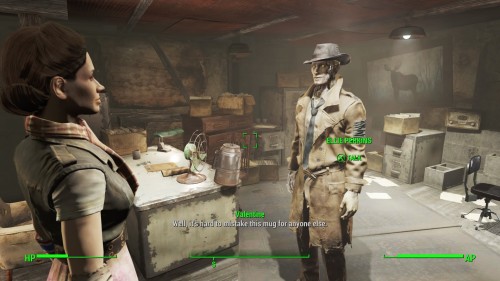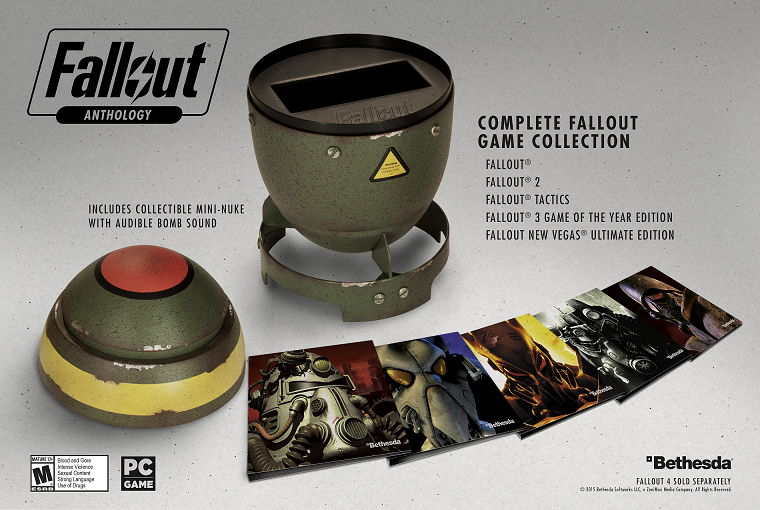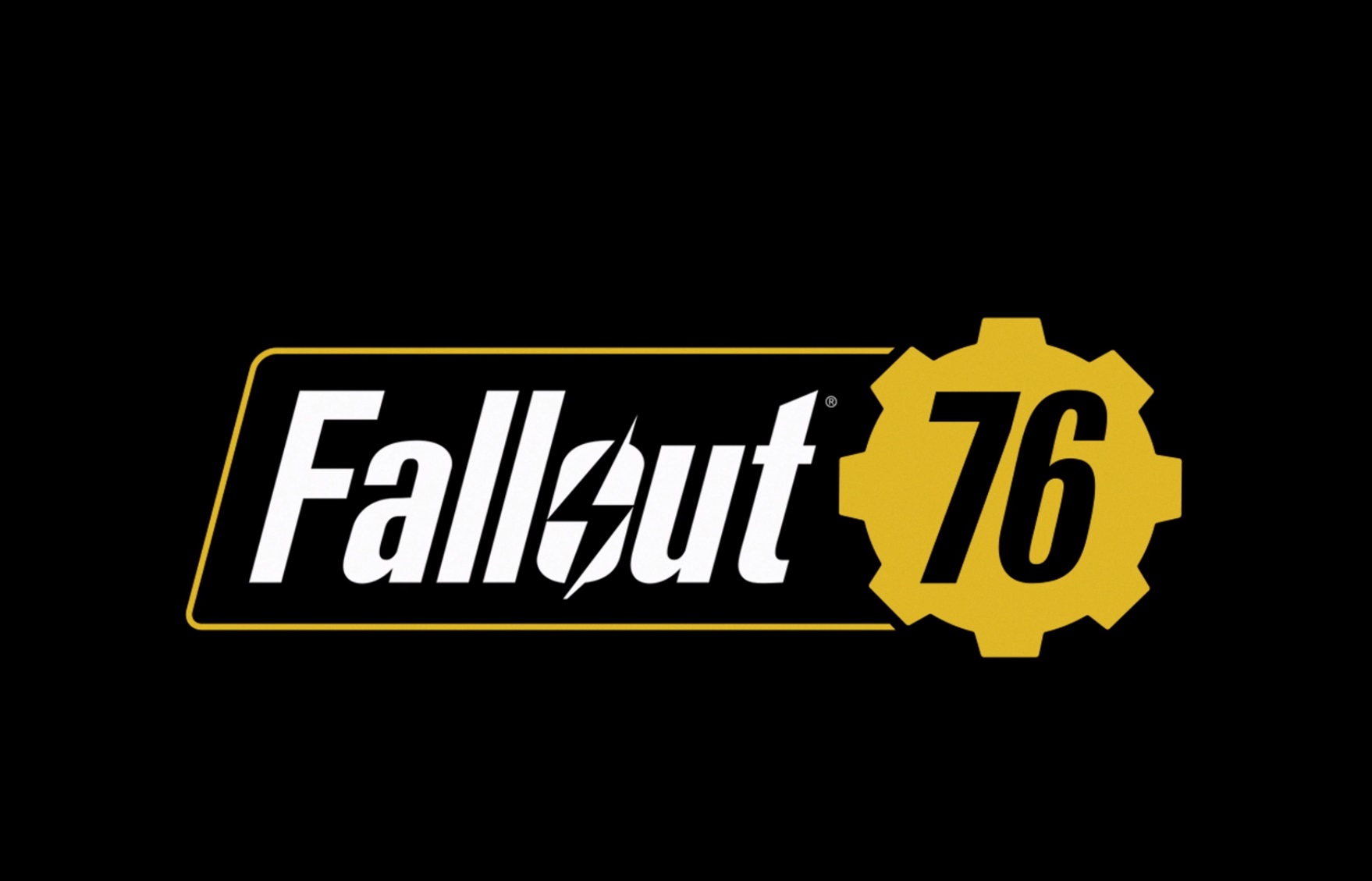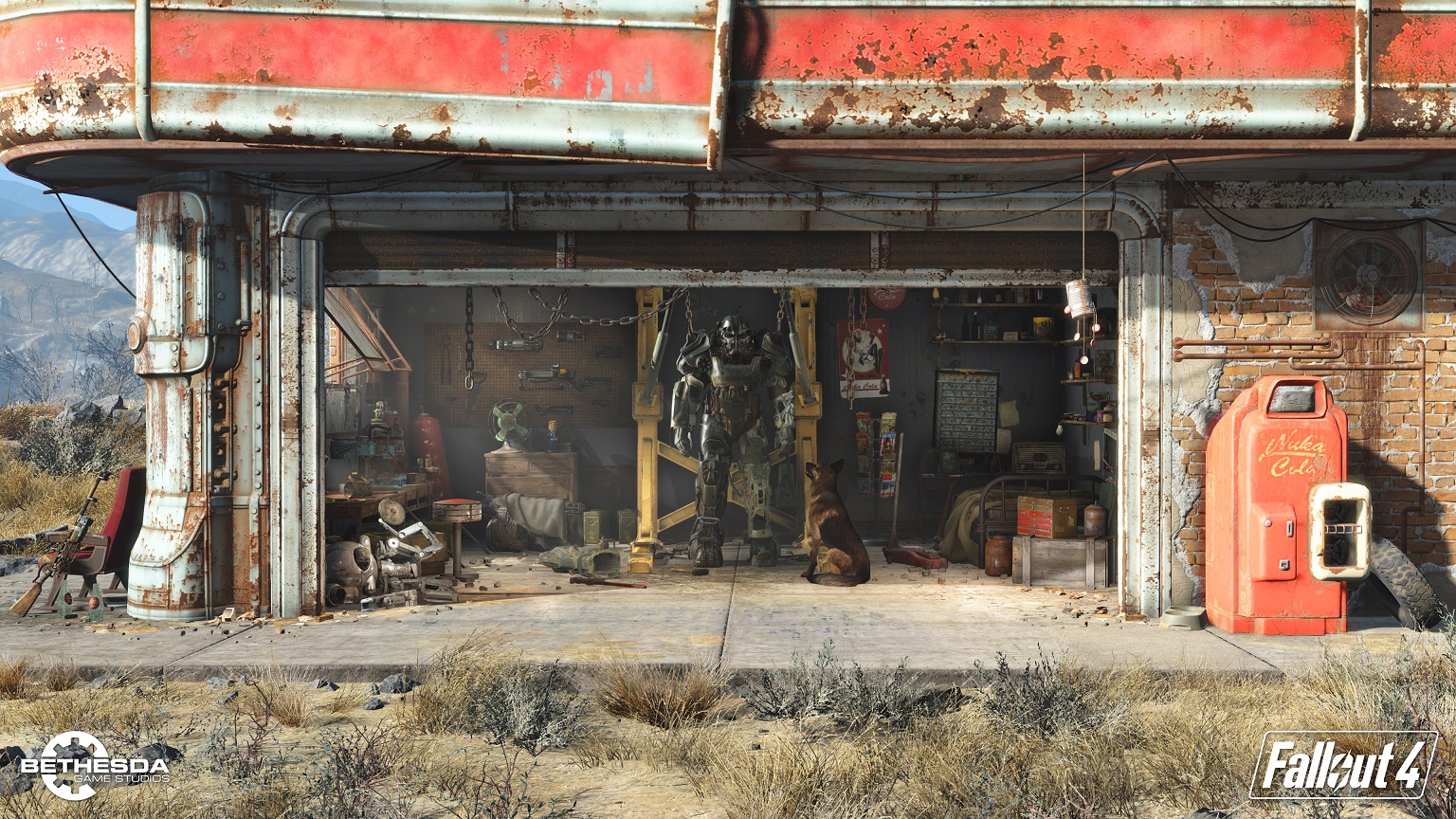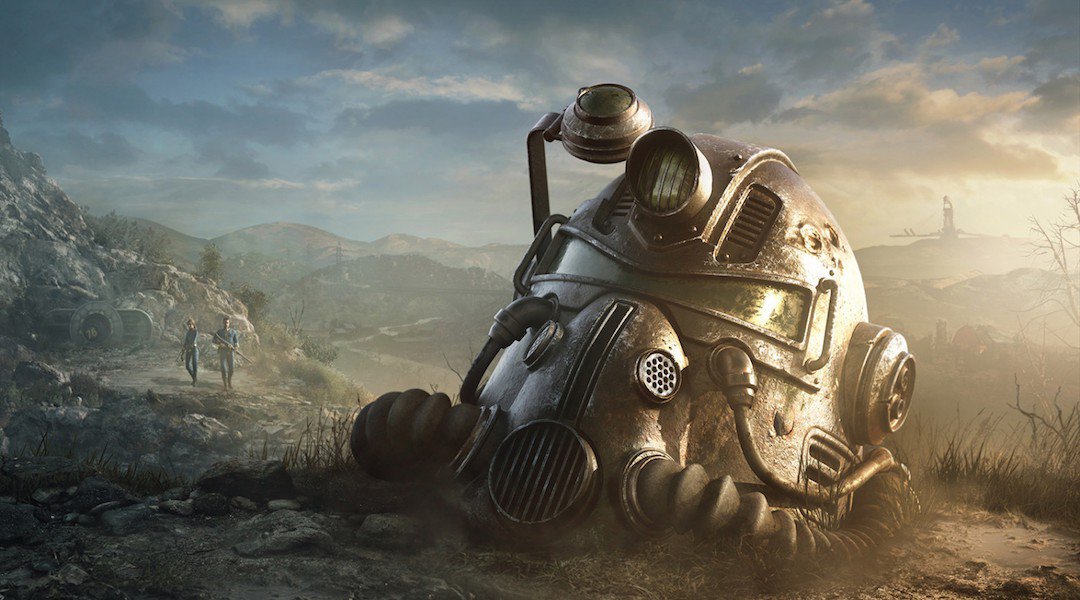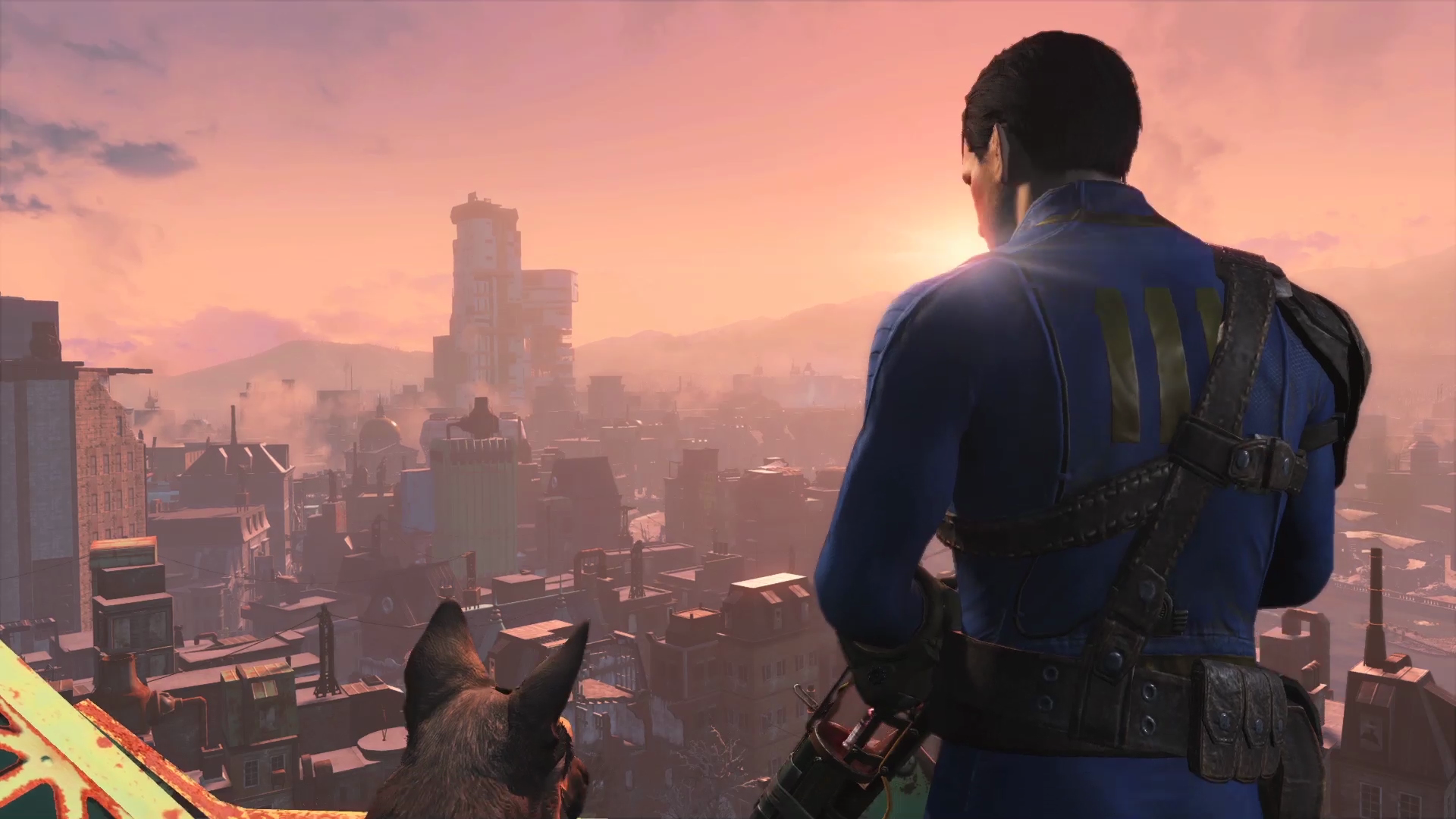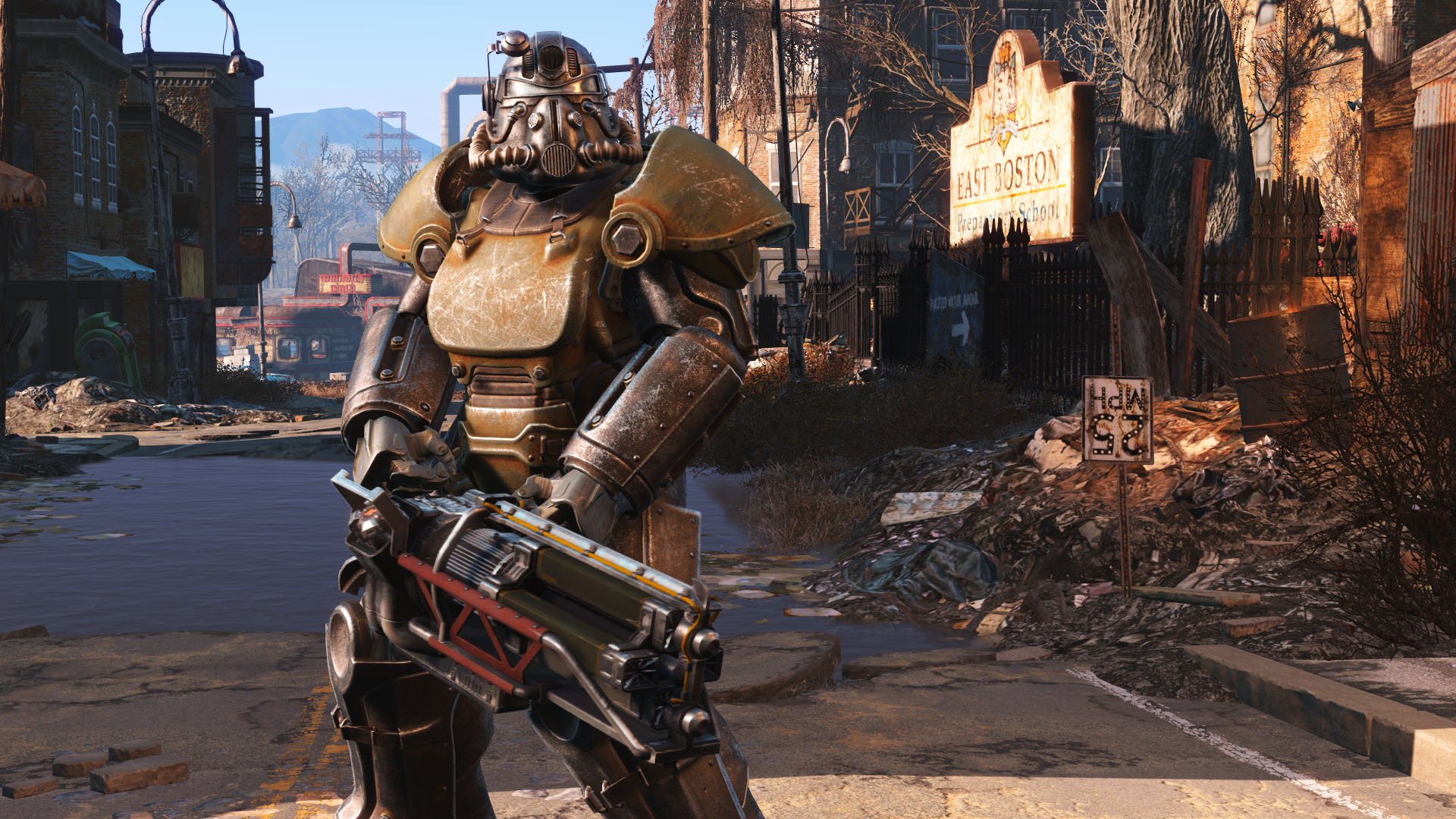
It’s without hyperbole that we can describe Fallout 4 as one of, if not the most, hyped games of the year. Fallout 3 brought the series back into the consciousness of modern gamers, New Vegas (from Obsidian) provided a deep and morally grey experience to the delight of series’ veterans, and Skyrim cemented Bethesda’s stranglehold over gamers’ free time, breeding addiction to its huge gameworld. The weight of expectation behind Bethesda’s next RPG was huge, the confirmation that it was going to be Fallout 4 only back in June set it into overdrive. But, it’s important to think of Fallout 4 not as the be-all, end-all of the series, but an evolution of the mechanics we’ve seen before into an experience fans of the series should have no problem sinking their teeth into.
It’s 2077, and a futuristic world that never grew out of 1950s’ Americana stands at the brink of World War. As the father, or mother, of an infant with an uncertain future ahead of them, your player character signs up to be placed in a patented Vault-Tec vault (those never go wrong, do they?), should the worst occur. Which it does, literally minutes later. As the bombs fall, your family barely escapes in time, only to find that they’ve signed up to one of Vault-Tec’s famous social experiments, and are unwittingly cryogenically frozen. 200 years of nuclear fallout pass, before raiders invade the vault, defrost and kidnap your child and scarper. This becomes your main focus as you wake up from Vault 111 – as a person out of time in the ‘Commonwealth’ (the post-apocalyptic area around Boston), looking for their child.
This should all be familiar, given Fallout 3‘s story concerned a child looking for their father. The premise that your character is from the pre-war world never amounts to much however, except as an excuse to have post-apocalyptic concepts explained to them (and by extension, you). Your character’s new voice acting and ability to comment on the environment is a welcome addition, adding a little more immersion to the story. The main quest line actually only accounts for the first two acts of the game, building up to a ‘reveal’, that ultimately was pretty predictable. However, from then on it diverges. The final, and lengthiest act, depends on your allegiance to one of a number of factions – the Minutemen (a governing police force) and the Brotherhood of Steel (a technology-fueled religious order) among them. Devoting enough time to one of these factions may strain relations with others, eventually leading you to a more satisfying ending appropriate to what you’ve chosen. Throughout this, there are 13 companions you can recruit to assist you – your faithful dog, Dogmeat, being only the first one you encounter.
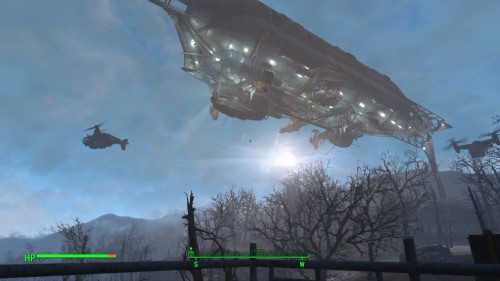
Of course, that’s only if you decide to tackle the game’s missions in order. In reality, the game world opens up to you after the first three or four hours, after an initial encounter with the Minutemen and an explanation of the new settlement crafting. The marker for the first clue on your quest to find your son is in Diamond City – and it’s quite a distance away. Cleverly, this gives you all the opportunity you need to get into trouble along the way. You may find a stray radio transmission which leads you to a larger quest line with one of the factions. You may decide to stay and help the Minutemen out a little more, or start your own exploration to harvest as many resources as possible. Finding your own stake in the Commonwealth yields the greatest rewards, so much so that the main storyline is comparatively less interesting.
Not only are there major factions to assist, there’s also a great deal of random missions and encounters strewn about the Commonwealth. You’ll constantly be coming across notes from unfortunate raiders, tipping you off to nearby hauls, or citizens in need of help, or even shop owners who could use a hand. If you’ve got the time, there’s potentially hundreds of hours of content to wade through.
With the help of id Software, Fallout 4‘s combat does feel significantly improved. While the time-slowing V.A.T.S. system is back (allowing you to target and maim enemies based on ‘AP’ points), actually fighting off hordes of Ghouls or Mutants with a pistol or submachine gun is more viable than ever. The gunplay feels smoother and more accurate, responding more like an actual first or third-person shooter would and less like a visual representation of heavy duty number crunching. In most cases, that is, as always there are still high-level enemies who can take ten point-blank bullets to the head and still keep on trucking. Levelling and perks are simplified with a new poster-like chart, with little animated Vault-Boys portraying what you can spend your level-up points on. You can shunt them into raising your S.P.E.C.I.A.L. stats (like Luck, Charisma), or if those levels are high enough, simply pick a related perk. If your Luck is at least three points high, you can unlock the ‘Bloody Mess’ perk to make enemies more likely to explode. If your Charisma is high enough, you can intimidate enemies by simply pointing a gun at them.
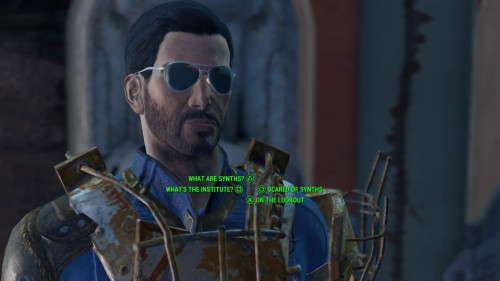
Crafting is a huge new addition to Fallout 4, and it comes in all shapes and sizes. All of the junk items you usually collect in a Fallout game can finally be put to use, as they can be stripped down to their bare building components. There’s the obviously useful modding of weapons with a huge array of scopes, stocks and add-ons. Armor can be strengthened, hardened, even boiled to produce better protection, from damage, electricity and radiation. In fact, it’s more useful to piece armor together from various bits you loot around the Commonwealth, even if you end up looking amazingly ridiculous.
Of course, you can even craft your own settlements around the Commonwealth. In pre-set areas, you’re basically let loose to design your own town, provided you have the materials and the time to put into it. You may think you’re playing The Sims as you build walls and floors to construct rudimentary shelters, making sure everyone is fed and provided with clean water, while monitoring the settlement’s happiness and defense ratings. The interface itself is a little wonky (a top-down interface, like The Sims may have worked better), as you sometimes find yourself carrying away vital components when you meant to place something else down, but it’s workable. Personally, I spent relatively little time on this feature compared to adventuring out in the Commonwealth, only returning home to heal up and stock up on some fresh water and crops of food, but there’s quite a lot of depth here to get creative with making your own towns. If you’d rather be out shooting and killing like me (in Fallout 4, that is, not in general), there are only a couple of occasions where crafting is vital to continuing the main storyline, and unfortunately that’s where you can lose a fair bit of time searching for materials you need. It’s great that junk you own can be broken into components for crafting, but you will get caught out eventually needing (1) ‘oil’ or (1) ‘ceramic’, and spend the next half hour deconstructing everything in sight to find some.
The best part of all this is the ability to craft your own suit of powered armor. Yes, the awesome suit from the box of just about every Fallout game is back, but the way it’s been integrated is pretty different. You can piece together your armor from different components (legs, arms, etc), strengthening them or fixing them, or even adding mods like a jetpack. However, rather than just equipping it as armour, your powered suit encases you completely, much like Tony Stark slipping into an Iron Man suit. From there, you’re pretty well protected from both radiation and damage, can hoist heavy objects and use a minigun with ease. However, every action you take will run down fusion cells which the suit runs on, essentially keeping your time in the armor limited to how many cells you have on hand. This is one of the changes I think stands out as the best, as it forces you to think about when and where you can best use your power armor. You start thinking – maybe it’s not worth bursting in minigun blazing in your suit – at least, not until you’ve done a recon beforehand to set-up a fast travel point.
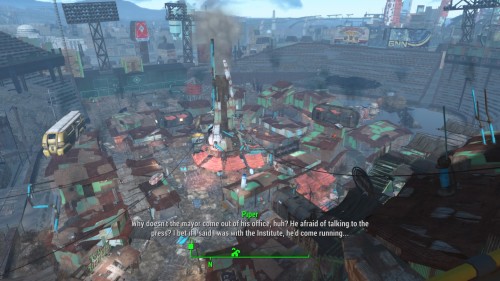
On PS4, Fallout 4 looks good, if not outstanding. It’s impressive the level of detail that Bethesda have managed to achieve, with the scale of the in-game world. Up close, character models have detail like pock-marks on skin, and powered armour looks more detailed than ever. However, at a distance some of the more potentially impressive environments suffer from pop-in and low-res textures. Taking an elevator above Diamond City, situated inside a huge stadium in Boston, should ‘wow’ the player, but a heap of muddy flat textures and low detail keep it from doing so. However, animation quality is a big step-up, especially with certain enemy creatures like Feral Ghouls, who attack with a new speed and ferocity that can make them genuinely frightening.
Of course, as a newly released Bethesda RPG title, there’s a litany of bugs to mention. Undoubtedly many of these will be patched, and I haven’t encountered anything gamebreaking as of yet, but that hasn’t stopped sections of Diamond City from disappearing completely (revealing a hole into the game’s map), or dialogue glitching out. At one point, as I was running along to an objective, I was suddenly teleported 100 metres away to the rooftop of a building, in the middle of a firefight that instantly killed me. In fact, fast travelling between locations has more than once placed me directly in the middle of crossfire I’ve had to narrowly escape – so be warned if you want to try fast travelling to any locations outside of your settlements. Enemies will sometimes freeze in place, or get caught on simple geometry, as will your companions. Loading is also an issue on the PS4, up to a minute even with the install, and usually on the higher end if you’re travelling between environments (from inside a building to outside, for instance).
Ultimately, while there’s a lot to love about Fallout 4, it didn’t grab me as much as I’d hoped. The sheer amount of content to sift through is unreal, from side-quests to crafting to simply exploring. However, while the main storyline has an interesting twist on the same-old ‘Vault Dweller goes out into the Wasteland’ premise of the series, and some interesting ideas in the Cylon-like Synths, it’s not the game’s strongest point. While there are a handful of interesting characters, Nick Valentine the cybernetic private detective among them, I’d find it hard to name to anyone who left as lasting an impression as, say, Mr. House did from New Vegas. While I was never particularly engaged in our protagonist’s struggle, there’s so much to see and do and craft to that there were many other ways to keep myself busy in the Commonwealth.
The moments when Fallout 4 comes together are when its new mechanics and atmosphere match each other perfectly. Wandering the crumbling ruin of an overpass under moonlight, searching for salvage among the dead when the bodies, Ghouls, start to move, sending you into a frantic firefight. Crafting and powering-up a suit of armor and marching through miles of blackened forests and scorched earth, just to glimpse the crater where the nuke first fell. Finding a limited-edition magazine that comes with a mini-game you can load up straight into your Pip-Boy, suddenly starting its own full-fledged retro RPG parody. Fallout 4 is full of these moments, enough to last a very long time, and if you can ignore the bugs and get into the story, you may find yourself addicted all over again.
-Long side paths for each of the game's main factions
-Some neat new additions to the universe, like Nick the Dick and the Synths
-Crafting settlements and gear finally puts your junk items to use
-Gunplay feels faster and more intuitive
-Powered armor is SO much fun
-Main storyline doesn't really engage
-Bugs, bugs, bugs baby
-Collecting and crafting can be tiresome

